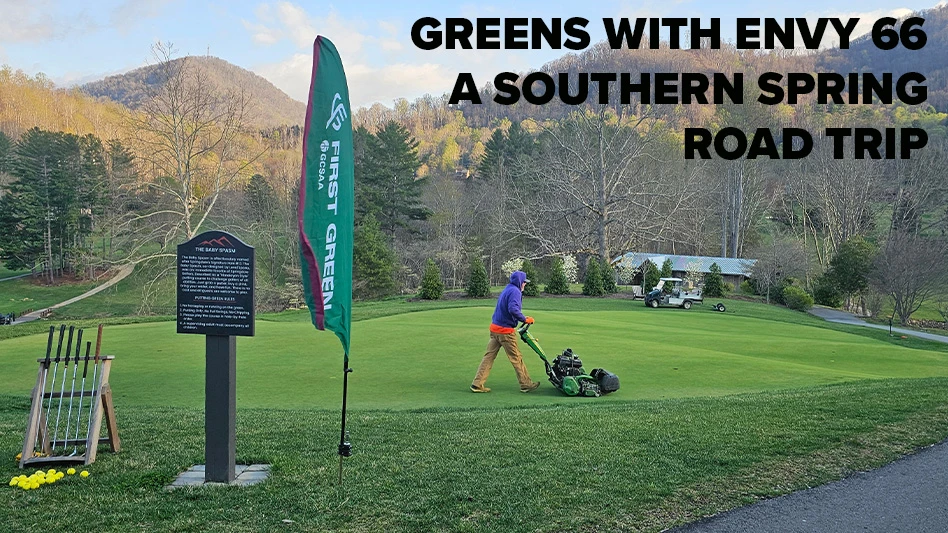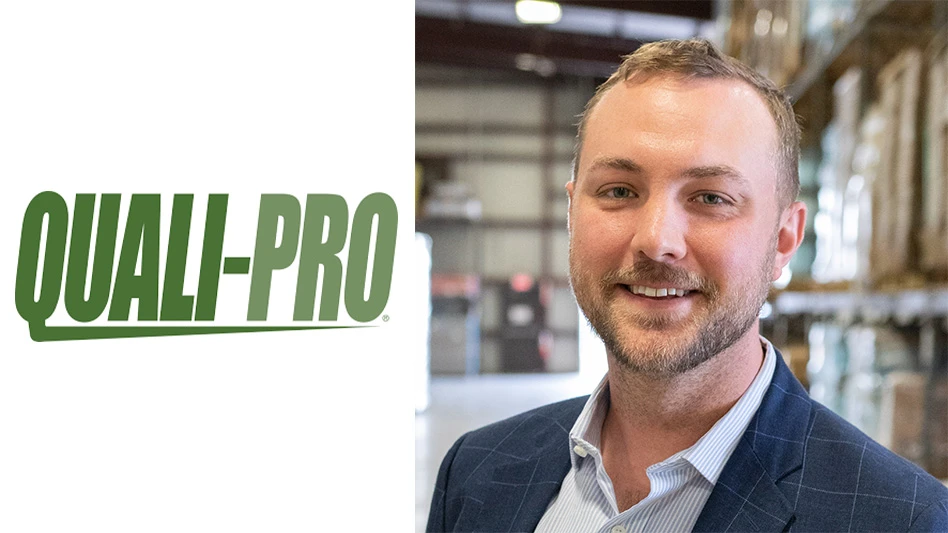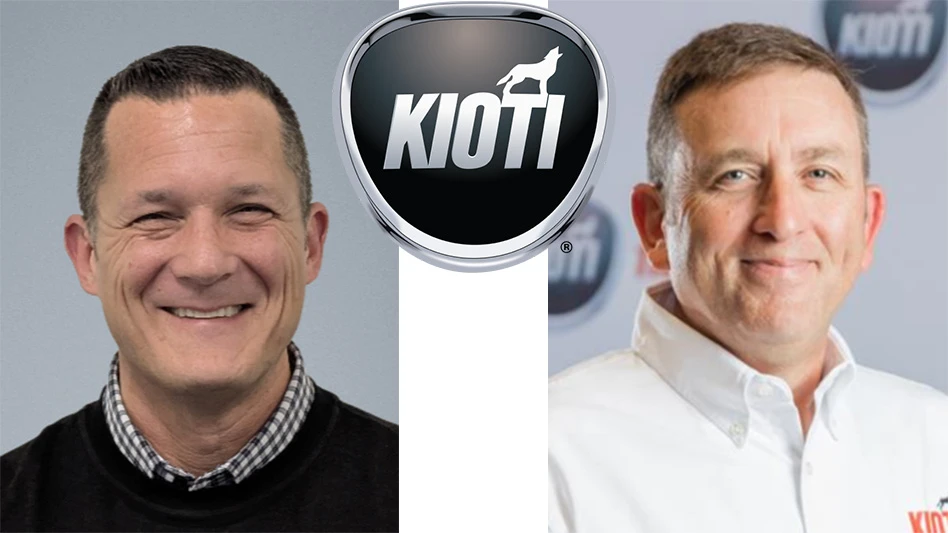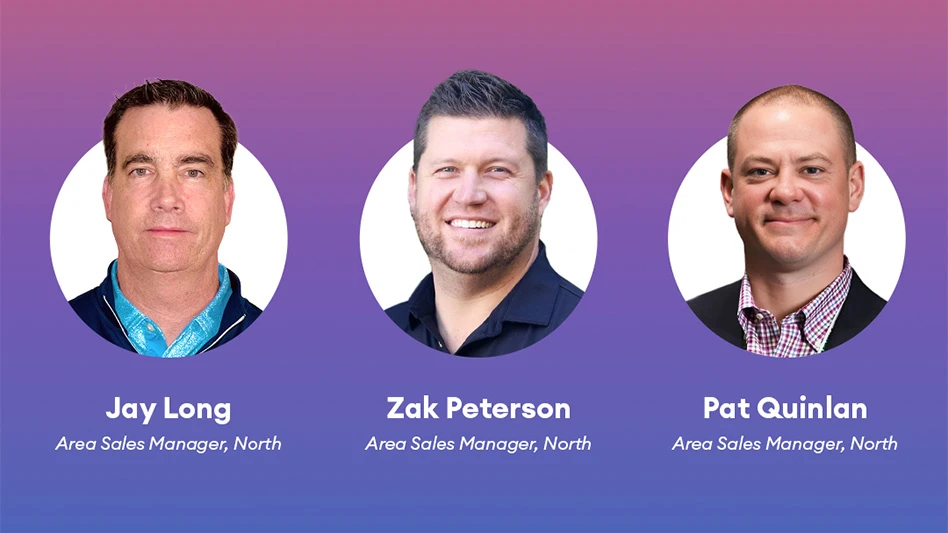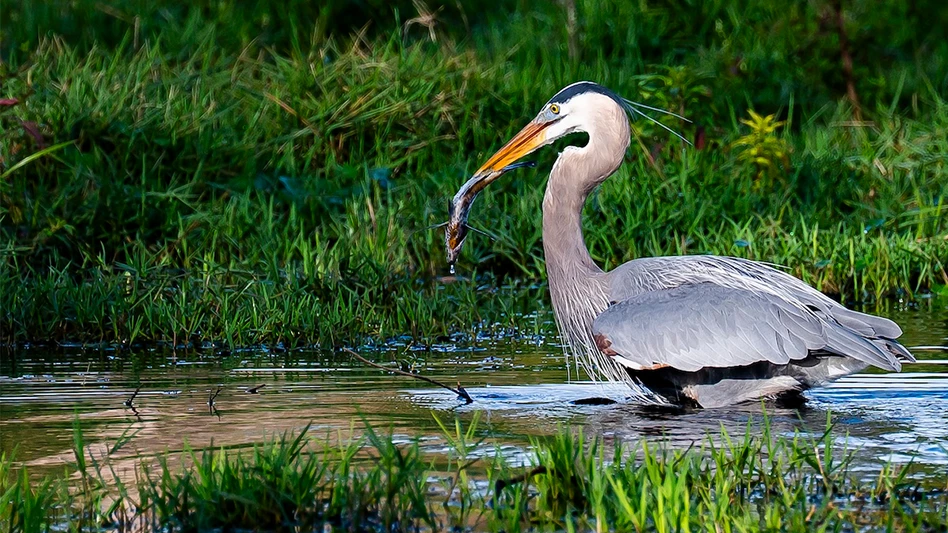
Turf colorants and pigments are keeping customers happy by providing winter color on warm-season grasses and increasingly more cool-season grasses. Aesthetically, they hide blemishes, better define playing surface boundaries and darken the surface for warm-season green-up.
However, there are cost- and labor-saving benefits, as well, says Dr. Grady Miller, professor and extension turf specialist in the crop and soil sciences department at NC State University. For example, they reduce winter turf maintenance with warm-season grasses, which results in savings on water, fertilizer and mowing labor. In addition, they open a herbicide program for winter weed control in warm-season grasses and can be cost effective compared to overseeding, he says.
Colorants and pigments reduce a superintendent’s bottom line, especially when it comes to aesthetic turf practices. “There is data available that compares overseeding costs (seed, mowing, labor, fertilization, irrigation, etc.), and colorants are often much cheaper than overseeding,” says Dr. Casey Reynolds, executive director of Turfgrass Producers International and former Texas A&M assistant professor. “Each course is different, though, and superintendents just need to determine the tradeoffs between overseeding and colorants.”

Dyes and colorants can reduce light stress on turfgrass plants in the summer, while in winter the benefits include retention of green color on warm-season grasses and more rapid spring green-up for both warm- and cool-season grasses, says Dr. Ed Nangle, Ohio State University assistant professor of turfgrass management. “The combination with fungicidal activity is also of interest, as it seems there is a possible synergy between the pigments and reducing light degradation of some of the active ingredients, therefore adding efficacy to their use” he says. “Also, it is somewhat situational dependent and budget dependent.”
Add HDTV and 4D technology that shows a tournament course’s turf flaws to millions of viewers, and colorants become a way to meet high expectations, says Jennifer Seevers, territory manager for Geoponics. Colorants, and pigments are used instead of overseeding to reduce water, fertilization and other chemical needs. Colorants are also used in combination with overseeding. “It’s almost like insurance,” Seevers says. “The results are basically impeccable.”
“High-paying members have their expectations met and the colorants assist with transition and consistency in color,” she adds. “This is referred to as ‘hybrid-overseeding’ when combining colorant with overseeding. Very often it’s what we’re seeing in professional sports on TV when playing on live turfgrass.”
Turf experts say there is no “should” with colorant and pigment use. “It’s about need and time of year along with what results are a superintendent looking for. If it’s to turn something green, urea is a good option also,” Nangle says. “However, if it’s to potentially enhance stress tolerance, then that’s a different matter and many superintendents are finding benefits with some of these products in this regard.”
The optimal use of winter colorant programs on Transition Zone warm-season turfgrass is when the turfgrass has experienced the first frost of the season and begins to go off color, BASF technical specialist Dr. Kathie Kalmowitz says.
“The best timing is to begin your application when the turfgrass still has green tissue so that the colorant can be applied to achieve or bring it back to the most natural color of green for that course,” Kalmowitz says. Repeat applications to continue this color can be planned based on weather conditions. “You to want to make the applications prior to the color fading totally because if you wait your program looks poorly executed,” she adds.
Colorants can be used in the fall in southern and Transition Zone environments as a replacement to winter overseeding, Reynolds says. This is particularly true of the longer-lasting colorants that provide more color for longer periods. These products typically contain a higher pigment concentration with some type of binder or resin to hold it on the leaf for longer periods of time. “Colorants that are more in-line with dyes can be used pretty much any time of year when superintendents are just looking to add a little more color, brightness or wow factor for special events,” Reynolds says.
In a transitional time, in October to November, if the grass is just a bit off color, Geoponics territory manager Brad Driggers recommends a lighter rate of paint or a pigment to carry it through to dormancy. “Then, when dormant, we use a rate of six or eight gallons of paint per acre,” he says. “March or April, we also might use a lighter rate to spruce it up. Then use pigments going into the spring.”

Drier, more arid days with low wind and full sun are “great” days to apply colorants, especially ones that are designed to last longer and need the binder/resin to adhere to the leaf. This doesn’t seem to work as well on cool, overcast or humid days, Reynolds says.
Superintendents can use colorants and pigments whenever they want to change the turf’s color, Miller says. “There are many different considerations on timing,” he adds. “Some folks like to keep color consistent, so they may use earlier and regularly, whereas others may want to apply after they have a marked color change to maximize their use.”
The reverse approach could be used on when to not use them. For example, are you willing to re-apply in fall if weather stays warm and continues to grow? Some may see this as a wasted application. You could take a different approach, applying the products when clientele recognizes and demands a certain type of playing surface. Note that using these products on dormant turfgrass does not provide a wearable surface like an actively growing ryegrass overseed. So, the amount of wear may influence using these products, Miller says.
Weather plays a factor in application and results, Geoponics territory manager Phil Martin says. “What we are looking for when applying is a light dew or frost on the ground,” he adds. “If it’s too much, it won’t adhere. It needs to be at least 40 degrees during the day of application. Normally apply in the morning, but if the hottest part of the day hits 40, you’re good. Colorant doesn’t really adhere or dry to the leaf blade if it’s frozen.”
Technology and the technical aspect of color application have been “absolutely pivotal” for Geoponics, Seevers says. “It’s the art. Working with people who are qualified, who know what to do and what not to do really has its plusses. Going rogue is a recipe for disaster. They have one chance to get this right. If a course sprays $20,000 worth of paint and doesn’t get it right, they blew it. That’s stuff that gets people fired.”
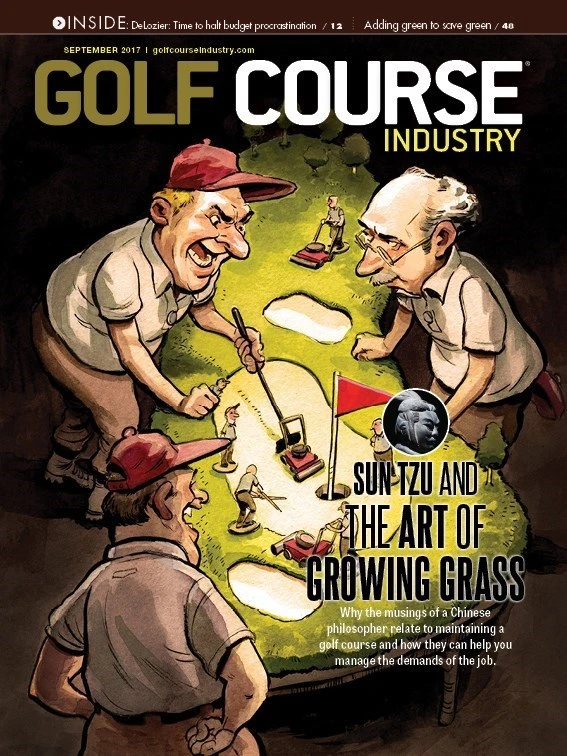
Explore the September 2017 Issue
Check out more from this issue and find your next story to read.
Latest from Golf Course Industry
- From the publisher’s pen: Technology diffusion and turf
- Applications open for 2025 Syngenta Business Institute
- Smart Greens Episode 1: Welcome to the digital agronomy era
- PBI-Gordon promotes Jeff Marvin
- USGA investing $1 million into Western Pennsylvania public golf
- KemperSports taps new strategy EVP
- Audubon International marks Earth Day in growth mode
- Editor’s notebook: Do your part
